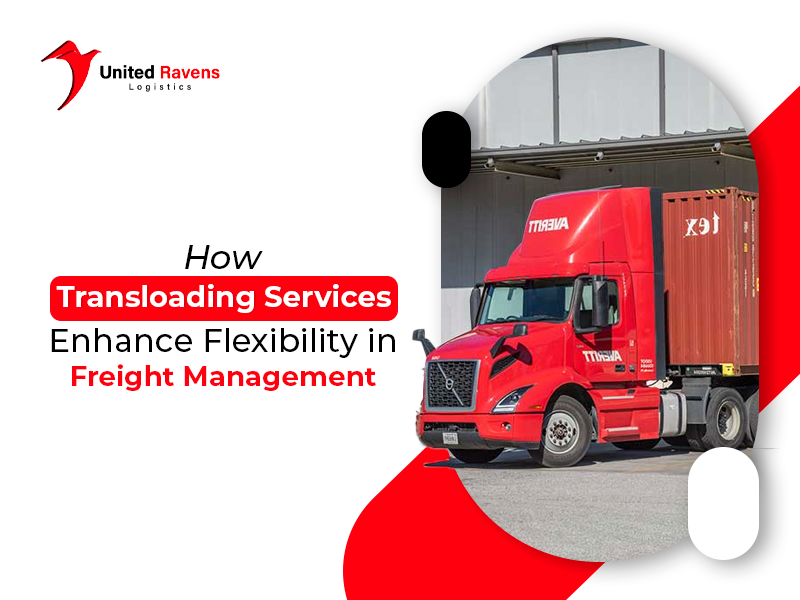Whether you’re moving cargo locally or globally, the need for flexibility is more important than ever. For businesses, it becomes even more important that cargo is delivered on time and the customer faces no shipment delay. One effective strategy for achieving this is the implementation of transloading services across various modes of transportation.
This helps you cover the gaps in your current supply chain and adjust to existing conditions. It also helps to guarantee timely delivery of goods to their destination, irrespective of the various channels in the distribution network. In this blog, we will see what transloading is, why it is important, and the different types of transloading.
Why is Transloading Important?
Transloading services are paramount to companies that move goods from one transportation mode to another in trucks, trains, ships, and planes. Transloading involves the movement of goods from one means of transport to another to ensure that freight is seamlessly transported through various means of transport. This process is useful, especially when businesses need to ship cross-border cargo and no straight transportation channels are available or cannot be used.
Transloading not only optimizes the process of logistics management but also gives the freedom to adapt to changing consumer trends, lowers the expenses of transportation, and increases the chances of timely delivery. With the increase in cross-border trade and globalization of markets, transloading remains vital in ensuring efficient and sustainable supply chains.
Different Types of Transloading
Transloading can be done between various modes of transportation, depending on business needs. For example, it can involve transferring shipments between two ships docked at a port or between two trucks. Let us now see the different types of transloading and understand them:
-
Destination Transload
In this type of transloading, products are moved from the initial point to the final location before being taken by trucks for delivery. This is especially important when businesses are transporting cargo by rail or by sea, but the final shipment needs to be distributed by road.
For example, large quantities of cargo transported by rail to the outskirts of a city can be transferred to smaller trucks for distribution to individual retail shops located within the city.
-
Door-to-Door Transload:
This service entails the continuous movement of shipments from the point of origin of the consignor to the doorstep of the buyer, as may be necessary, through various means of transport. For instance, a container of air parts may be shipped from Europe to the U.S., possibly transported by ship to a cargo port and then by truck or train to a regional distribution center.
-
Origin Transload
The process begins at the starting point, where goods are initially loaded into a transportation mode. They are then loaded in a transload facility to be offloaded to another form of carriage to the destination. It is useful for moving goods from manufacturing plants to other markets that could be far away. For example, dairy products can be transported through trucks from the farms to the local port, from where milk products can be shipped across the border.
How can Transloading Enhance Your Freight Flexibility?
Transloading offers many benefits for flexible cargo delivery, including cost savings, less overhead on shipment, and flexible delivery of cargo. Let us go through them in detail:
-
Help in Adapting to Changing Cargo Demand
Businesses can experience changes in demand and fluctuations during peak and off-season. If there is an increase in demand, businesses can quickly respond and reroute the products to a specific location using a different mode of transport in a short period of time. This ensures that businesses remain efficient and responsive to changing market conditions and meet customer demand to avoid overstocking or stockout situations.
-
Rerouting in Case of Disruptions
Transloading is particularly useful in managing disruptions such as adverse weather conditions, strikes, or accidents that might block direct shipping routes. It allows for quick rerouting of freight, minimizing delays and ensuring the continuity of supply chains. Transloading provides alternative pathways, ensuring that shipments reach their destinations with minimal hassle despite unexpected disruptions.
-
Enhanced Customer Flexibility
Transloading increases route flexibility, allowing businesses to utilize various transportation networks and hubs. This flexibility can lead to more efficient routing options, avoiding congested or less reliable routes. By leveraging multiple transport modes and hubs, businesses can optimize delivery times and reduce the risk of shipping delays. This strategic flexibility enhances overall logistics efficiency, ensuring that freight reaches its destination through the most effective routes available.
Can You Save Money by Transloading?
You can! By optimizing the use of different transport modes and routes, transloading services can lead to significant cost reductions. For instance, bulk shipments transported by rail or sea are often cheaper than long-haul trucking. Additionally, efficient transloading minimizes handling and storage costs, reduces the risk of delays and damages, and leverages volume discounts from carriers. Businesses can further save by strategically positioning transload facilities to serve as consolidation points, reducing the need for extensive warehousing.
Conclusion
Transloading offers unmatched flexibility and efficiency in transporting goods across diverse modes of transport. By integrating transloading into your logistics strategy, you can reduce costs, improve delivery times, and respond swiftly to changing market demands.
Further, to maximize the benefits of transloading, you can partner with a seasoned third-party logistics (3PL) provider. Experienced 3PL companies offer comprehensive transloading services, leveraging their expertise, networks, and technology to streamline freight management.

